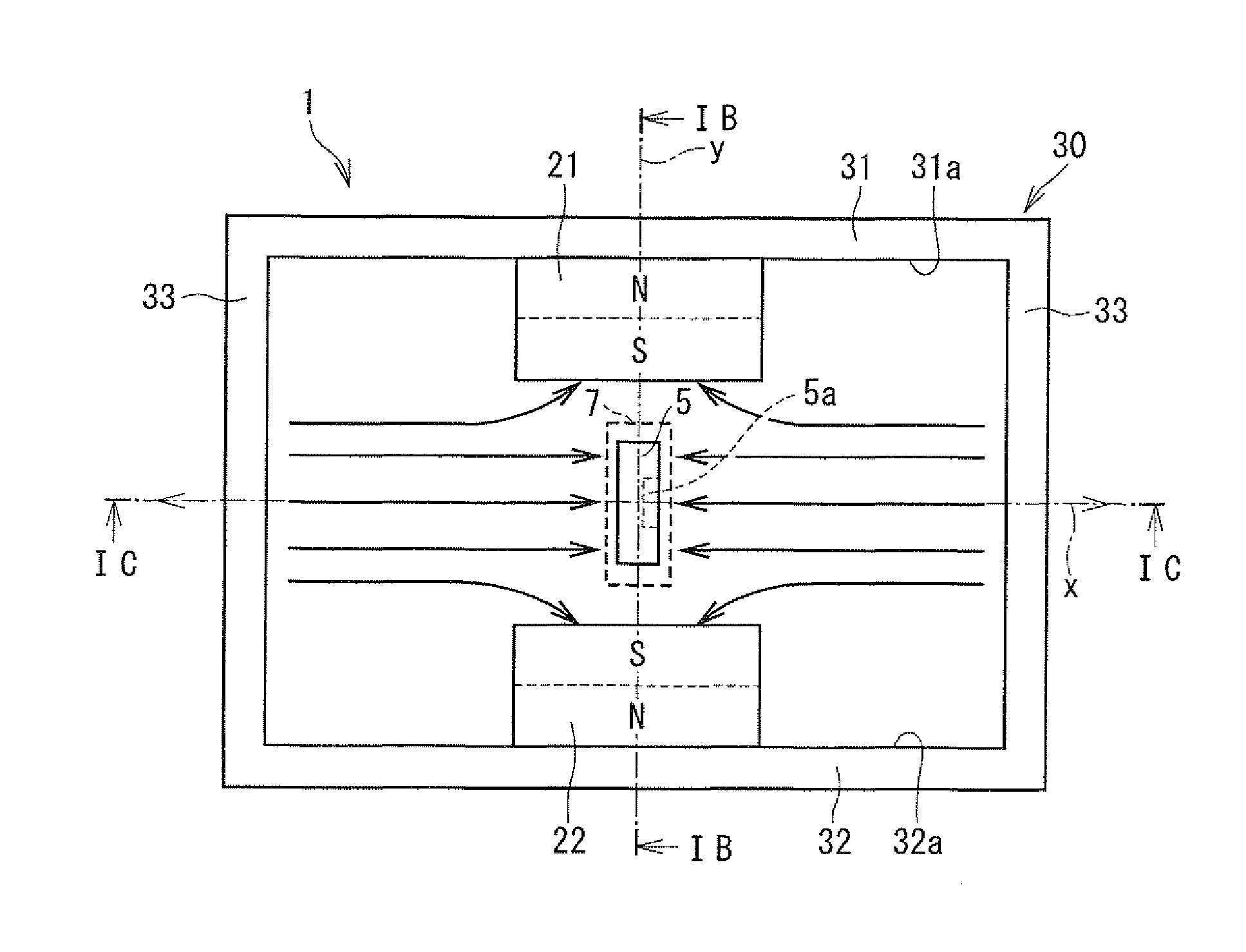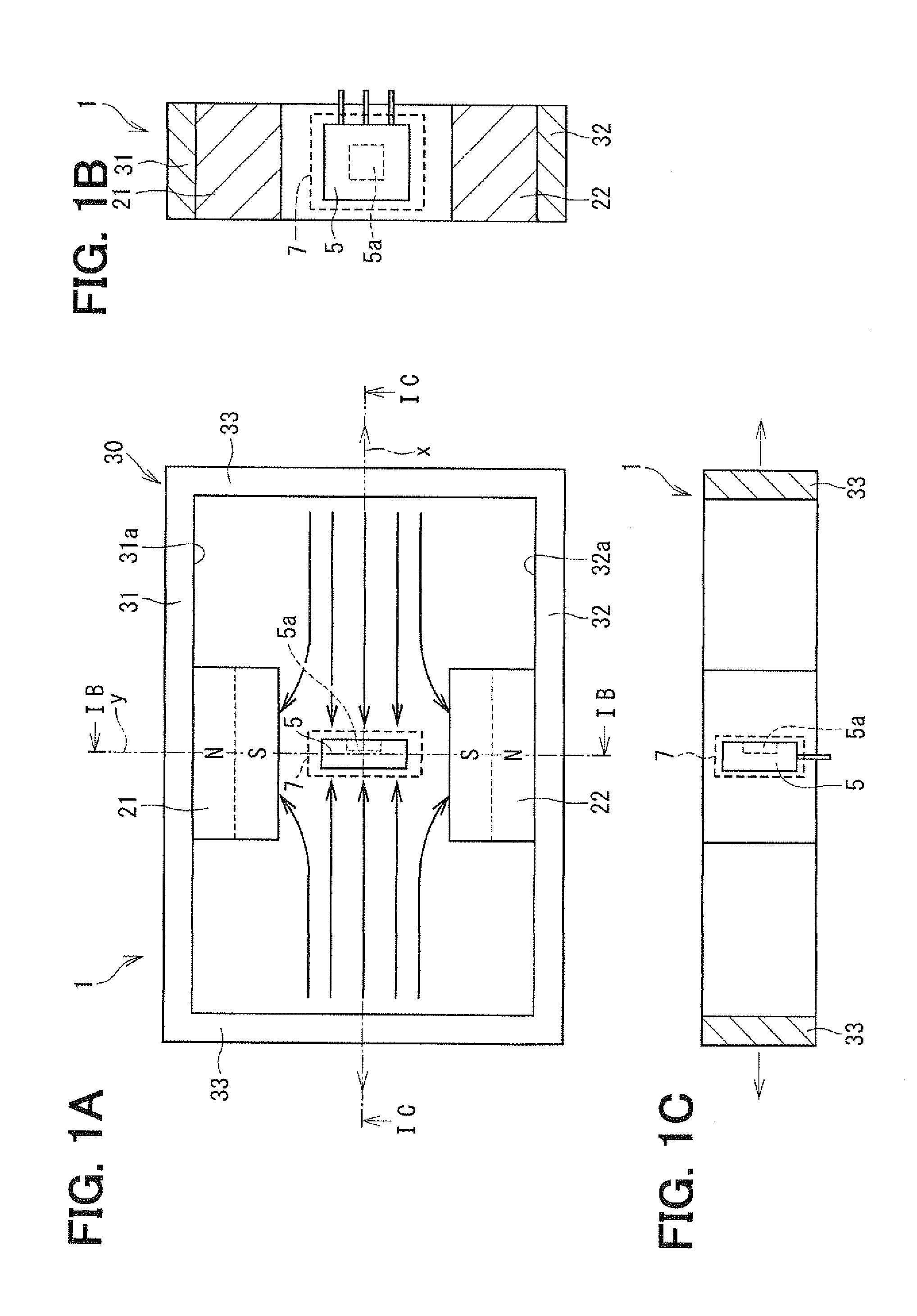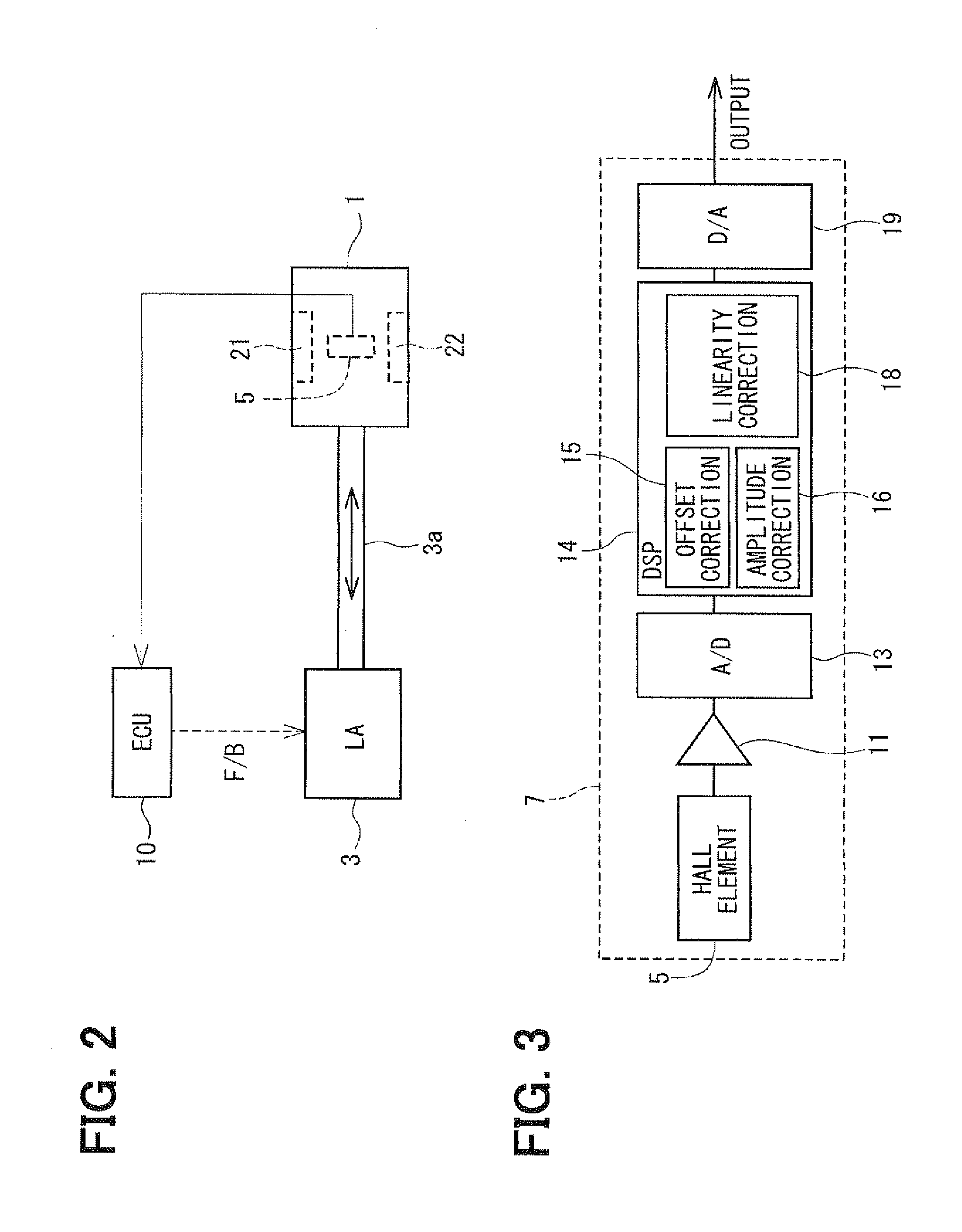Stroke amount detecting device
a stroke amount and detecting device technology, applied in galvano-magnetic devices, galvano-magnetic hall-effect devices, instruments, etc., can solve the problems of insufficient robustness, detection errors, detection errors, etc., and achieve linearity, improve the robustness of the stroke amount detecting device, improve the effect of stroke amoun
- Summary
- Abstract
- Description
- Claims
- Application Information
AI Technical Summary
Benefits of technology
Problems solved by technology
Method used
Image
Examples
first embodiment
[0047]A stroke amount detecting device according to a first embodiment is employed to detect the amount of stroke of a stroking object. For example, the stroke amount detecting device is employed to detect the stroke amount of a stroking member, such as a transmission, an acceleration pedal, or a brake pedal of a vehicle.
[0048]Referring to FIG. 2, a stroke amount detecting device 1 according to the first embodiment generally includes first and second magnets 21, 22 as examples of first and second magnetic field generation members, and a Hall element 5 as an example of a first sensor element. The Hall element 5 moves relative to the first and second magnets 21, 22 in accordance with a linear movement of a stroking member 3a of a linear actuator 3 so as to detect the stroke amount.
[0049]The detected stroke amount is sent to an engine control unit (ECU) 10. The ECU 10 utilizes the detected stroke amount to perform a feedback control of the linear actuator 3.
[0050]Next, a structure of t...
second embodiment
[0075]A second embodiment will be described with reference to FIGS. 5 and 6.
[0076]Referring to FIG. 5, the stroke amount detecting device 1 according to the second embodiment has a first magnet 25 and a second magnet 26, in place of the first magnet 21 and the second magnet 22 of the first embodiment. Each of the first magnet 25 and the second magnet 26 has a depressed shape including a thin portion 25a, 26a and thick portions 25b, 26b at opposite sides of the thin portion 25a, 26a.
[0077]The thin portion 25a is provided at a middle position of the stroke range, that is, in a range including the Y axis. The thick portions 25b are provided at opposite sides of the thin portion 25a with respect to the stroke direction. Each of the thick portions 25b has a thickness greater than the thickness of the thin portion 25a with respect to the Y direction. Thus, a distance between a surface of the thick portion 25b and the X axis is less than a distance between a surface of the thin portion 25...
third embodiment
[0082]A third embodiment will be described with reference to FIGS. 7, 8A and 8B. In the stroke amount detecting device 1 according to the third embodiment, as shown in FIG. 7, the first magnet 21 and the second magnet 22 are offset from the Y axis to a negative side of the stroke direction, that is, to a left side in FIG. 7.
[0083]For example, in a case where the stroke range of the stroking object is biased toward the negative side from the reference point, the first magnet 21 and the second magnet 22 are arranged on the negative side to be adjacent to the center of the stroke range. Thus, an accurate range can be selectively utilized as centering the point where the magnetic flux density is zero.
[0084]In FIG. 7, an arrow Le represents a detectable range (detection available range) in which the magnetic flux density can be detected by the Hall element 5 and an arrow Lu represents an undetectable range in which the magnetic flux density cannot be detected by the Hall element 5. As sh...
PUM
 Login to View More
Login to View More Abstract
Description
Claims
Application Information
 Login to View More
Login to View More - R&D
- Intellectual Property
- Life Sciences
- Materials
- Tech Scout
- Unparalleled Data Quality
- Higher Quality Content
- 60% Fewer Hallucinations
Browse by: Latest US Patents, China's latest patents, Technical Efficacy Thesaurus, Application Domain, Technology Topic, Popular Technical Reports.
© 2025 PatSnap. All rights reserved.Legal|Privacy policy|Modern Slavery Act Transparency Statement|Sitemap|About US| Contact US: help@patsnap.com



